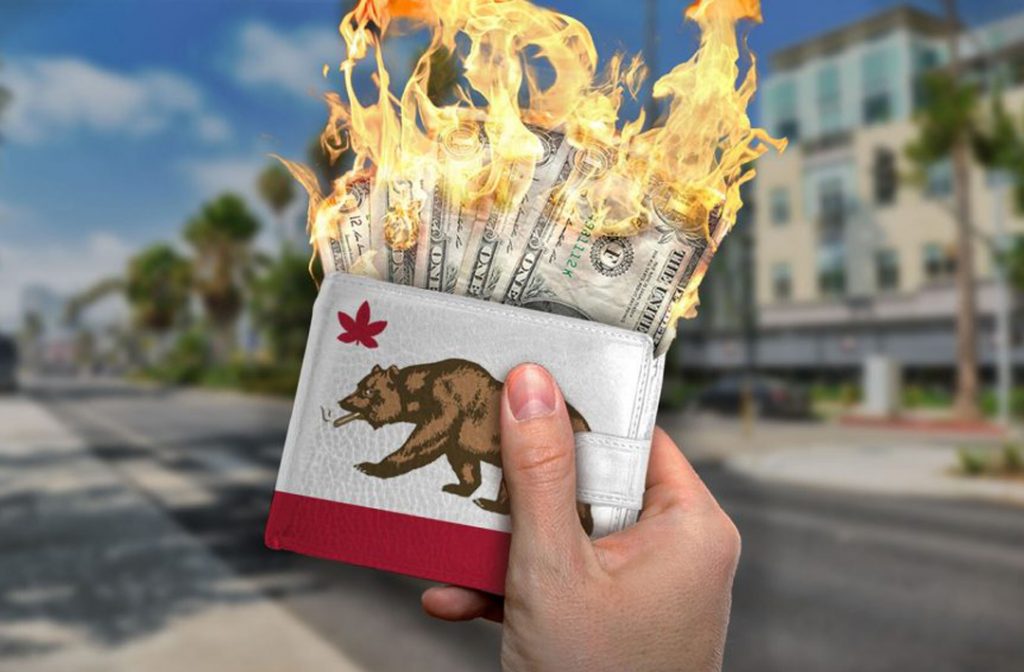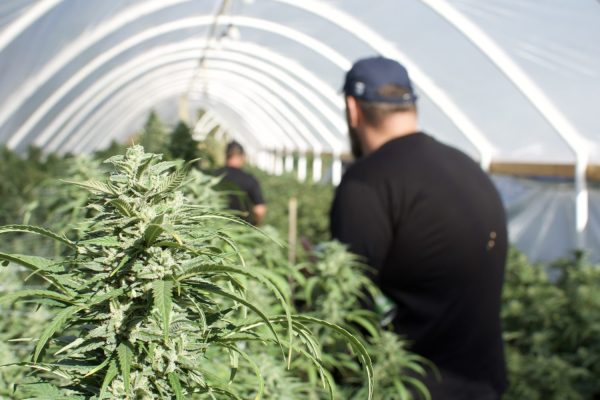The stats are in for the 2021/2022 calendar year in cannabis, and it’s not looking good. The epi-center for cannabis culture has always been California, which is suffering heavy losses throughout the entire cannabis supply chain, all due to overproduction, and heavy state taxes.
The domino effect of it has been a devastating ripple effect as well. Not only has over production created less of a demand, the quality has taken a serious fall as well. That serious fall in production has ended with people shopping less at dispensaries.
Also for outdoor farmers, the price per pound currently does not cover the costs of the post production process of cutting down the weed, curing the buds, and trimming/packaging the buds. This is all from the issuance of too many licenses, and not enough of them knowing how to create craft cannabis for the market.
The California Cannabis community is made up of a very small and elite group of growers, who have studied how to grow this plant in the best conditions possible for the last 20-50 years.
Some of the craft cannabis growers, and companies are all in jeopardy from the influx of new licenses, and from many of the new players in the cannabis industry being major corporations, some of which are producing high yields, but with little care to quality.
California is and always will be, a boutique market when it comes to Fine Craft Cannabis. We constantly hear that California’s government is treating the cannabis industry similar to the tobacco industry.
The reality of it to a Californian, is that the cannabis industry is more like the wine industry. Wine brings people together the way cannabis brings people together. They both offer healing, and both can actually be good for your health if taken in moderation. They both also compliment the food industry in such a way that it boosts sales all the way around. It could even be argued that the greater population in this world enjoy smoking cannabis more after dinner than people who smoke cigars after dinner.
Just like wine, in cannabis there are connoisseurs who are respected people in the cannabis community, and they recognize quality, similar to a wine sommelier who has studied wine, our term for a cannabis sommelier we call them “Green Thumbs”, they are experts on how to taste different weeds, and have parameters to quality assurance when it comes to smell, grow quality, terpene profiles, bud structure, and curing process.
Our culture has already identified their Opus Ones, their Dom Perignon’s, and their Caymus Vineyards. The question is, will the government ease up on taxes before they end up flushing out the very iconic brands that make cannabis a culture worth following and seeing thrive?
In California, this is how the tax production is in every license offered in the cannabis supply chain:
Cultivation – In the Cultivation sector where the plants are grown they not only pay three times the cost per square foot for a normal zoned building in a non green zone area, they also get cultivation taxes 27-33% per pound sold to the distribution side of the supply chain. That’s ⅓ of everything you make before you pay any employees, cover production costs, insurance, and losses. The grower employs the most people and has the highest production costs. If the company is not even making a profit, paying a 3rd should be written off like any other company that takes a loss or has heavy costs.
Distribution – In the distribution side of the business, a distributor is expected to operate in a green zone, which means they are immediately paying three times the normal rate per square foot. They have to pay a sales team, along with a 2-3 person management team. For every product sold they also pay a 30% tax, per product sold.
Transportation – In transportation, this is the only license that does not require you to be in a green zone, but they are still heavy taxed as a cannabis business operator, being charged city and state taxes at ⅓ or 33%.
Manufacturing – Manufacturing is even more taxing than the other licenses. In manufacturing you pay cultivation taxes, taxes for converting cannabis flower to cannabis extract per liter, and per unit of whatever cannabis packaged and distributed product you create that leaves from the location of the cannabis manufacturer.
Delivery/Dispensary – Another license that requires a green zone, this operation is full of rules and ways of being fined by the Bureau of Cannabis Control, and since they are in a green zone, they pay three times the normal cost per square foot. They also pay 30% to the state and up to another 30% for city excise taxes. This is literally 6/10 of the money taken off the top. This is before paying an employee,, and management. This is also why the price per jar is so low, normally brick and mortar and delivery companies don’t pay more than $35 a jar, which is a joke to craft cannabis suppliers. It’s no secret that deliveries and dispensaries are charged two different ⅓ state and local excise taxes, this leaves only a third of the cash profits to cover all of the business expenses for a delivery or dispensary. There’s no writing anything off including losses to be deducted from these two groups, and doing so risks your license being taken away, which the license is already worth millions of dollars.
In short, the government needs to reform its cannabis tax plan into a plan that gives love to small batch craft cannabis companies, especially the ones who carry one license. They also need to show love to the bigger companies as well and taking ⅓ in every aspect of the business right off the top is no longer a tax in the eyes of the community, it’s a cold hearted business partner and decision maker who has no problem nose diving your business and pocketbook.









